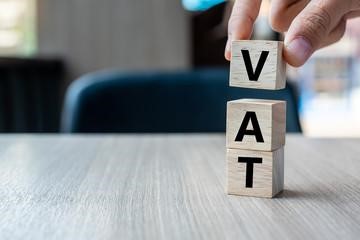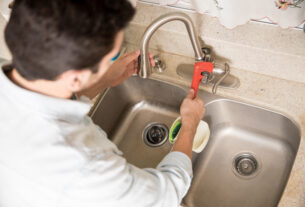If you’re planning on setting up a VATable business in the United Kingdom (UK), you probably already know that you’ll need a VAT numbers. The only challenge would be how to get one.
Fortunately, the process of obtaining a VAT numbers in the UK is rather straightforward.
This article presents a step-by-step guide on how to acquire a VAT numbers. But first, let’s start by understanding the significance of this number.
What Is A VAT Number?
VAT is an abbreviation for Value Added Tax. It’s a tax levied on goods and services at specific points along the value chain.
Not all countries have a VAT system. However, those that do may require certain businesses operating within their jurisdictions to register for a VAT numbers. A VAT number is essentially a tax identification number for all VAT-paying businesses.
Now, there are several resources where you can read more on how to get a VAT number. The procedure may vary considerably from one tax territory to another.
What Are The Benefits Of A VAT Number?
Certain types of businesses may be legally required to have a VAT number. For such companies, becoming VAT-registered helps avoid non-compliance penalties.
A VAT number may also improve your brand’s appeal among its clients and stakeholders. That’s because VAT-registered companies appear more significant and more successful.
Note that the VAT threshold in the UK is a minimum of £85,000. Therefore, having a VAT number creates the impression that your venture is profitable, even if it’s not generating much.
It’s also worth noting that certain government agencies and credit companies may favor VAT-registered businesses. With a VAT number, you can easily unlock any incentives such entities offer.
Having a VAT number also proves that you’re a taxpayer. It lends further credibility to your business.
Lastly, you may leverage a VAT number to claim VAT refunds. You can claim VAT on both goods and services your business procures.
How Does VAT Work?
Understanding how VAT works is critical to unlocking the benefits of a VAT number.
As already hinted, your business must have a turnover of at least £85,000 to register for a VAT number. However, you can also register even if you fall short of this threshold.
After obtaining a VAT number, you’ll be required to factor VAT into the price of all goods and services your business sells. You’ll also need to keep records of the VAT your business pays for all purchases. That includes imports.
As a VAT-registered business, you’re required to report all VAT your business paid on purchases as well as the VAT you charged your customers. You do that by sending a VAT return to Her Majesty’s Revenue and Customs (HMRC), typically every three months.
Needless to mention, you must pay any outstanding VAT to HMRC. This is usually the difference between the VAT amount your company paid to other businesses and the amount you charged your customers. If the difference is a negative balance, the HMRC should refund you the total amount.
What Do You Need To Register For A VAT Number?
The information required to obtain a VAT numbers depends on the type of business.
To get a VAT number for a limited company, you’ll need to provide your company’s registration number, bank account details, Unique Taxpayer Reference (UTF), and annual turnover. Other relevant information you may be required to provide includes your Self-assessment return, corporate tax, and pay-as-you-earn (PAYE) tax.
For a partnership or sole proprietorship, you must supply your National Insurance number, national identity (such as a driver’s license or passport), bank account details, UTR, and turnover. Additional information would be your Self Assessment Return, P60, and pay slips.
How Do You Obtain A VAT Number?
Once you have the requisite information, you can apply for a VAT number using Government Gateway user credentials, including an ID and password. These details are beneficial for online applications.
If you cannot apply for a VAT number online, you can do so by post. There are two ways to go about that.
First, you could use the VAT1 form if you’re either applying for a ‘registration exception’ or wish to join the Agricultural Flat Rate Scheme. This option is also available if registering divisions of larger companies that operate as separate entities, hence needing their VAT numbers.
The second option is using other variations of the VAT1 form. These include VAT1A for European Union (EU) companies ‘distance selling’ to clients in Northern Ireland, VAT1B for importing goods worth over £85,000 from an EU country into Northern Ireland, and VAT1C for disposing of assets on which you’ve successfully claimed Directive refunds.
What Happens After Applying For A VAT Number?
VAT number applications may take a couple of hours to a few business days to be processed.
If your application is successful, you’ll receive a confirmation of your effective registration date and a 9-digit VAT number to include in all your invoices.
You’ll also receive information on the right time to submit your first VAT return and payment and information on setting up your business tax account. Remember that this account will be necessary to access VAT services online.
Wrap Up
With all the benefits of a VAT number, it’s unimaginable that you’d allow your business to operate without one. Certainly not when the procedure involved in applying for this number is also relatively straightforward.




